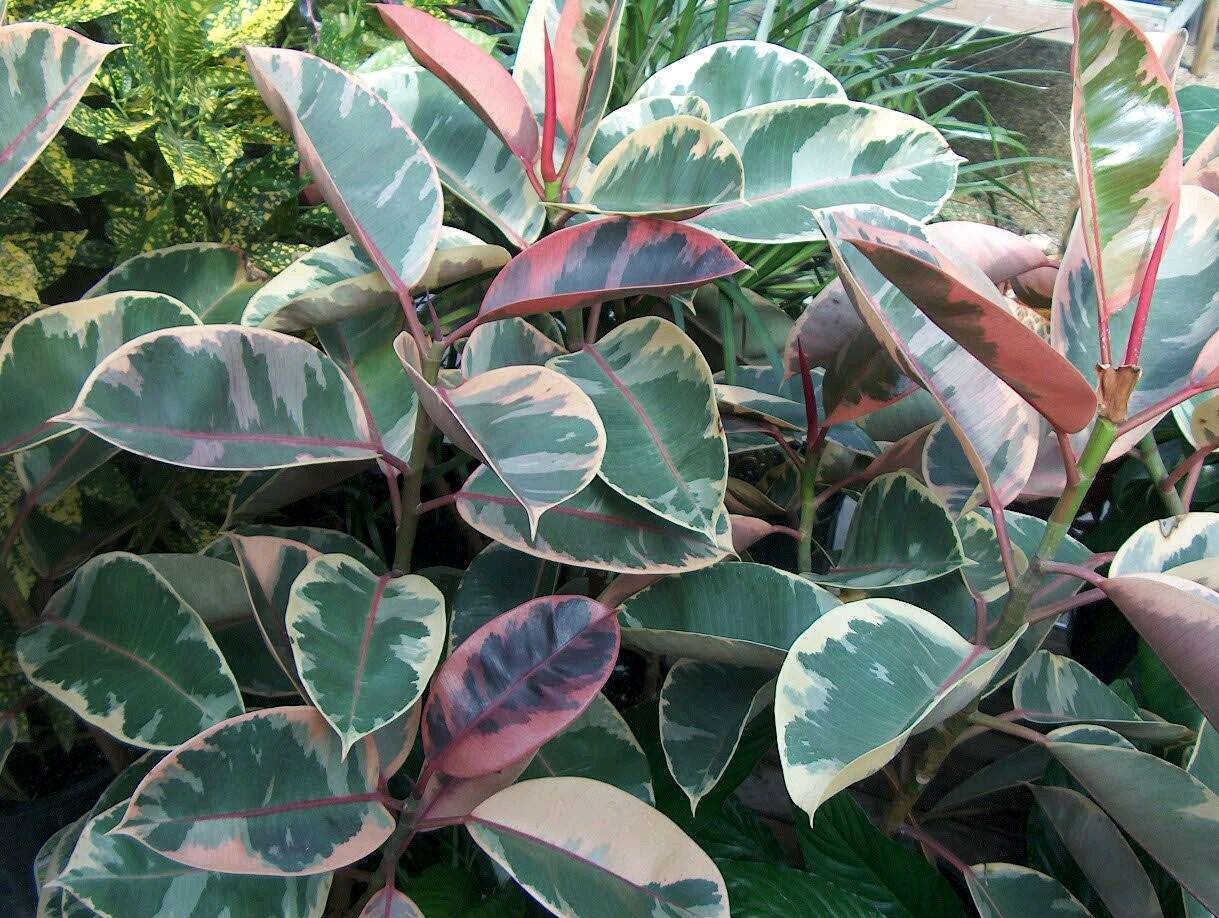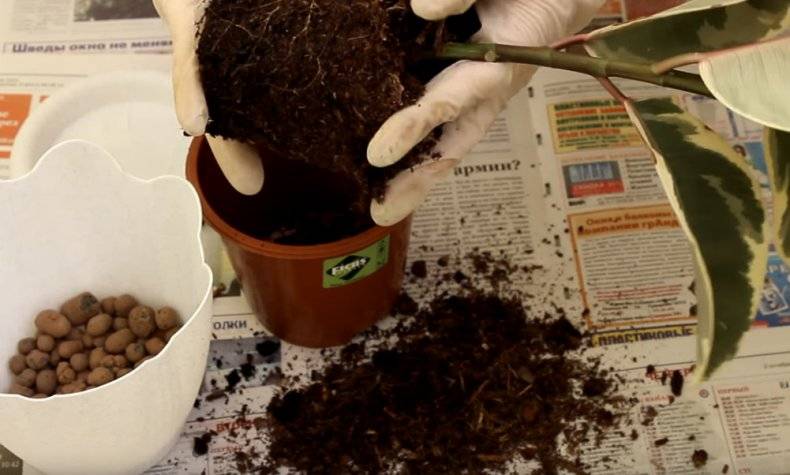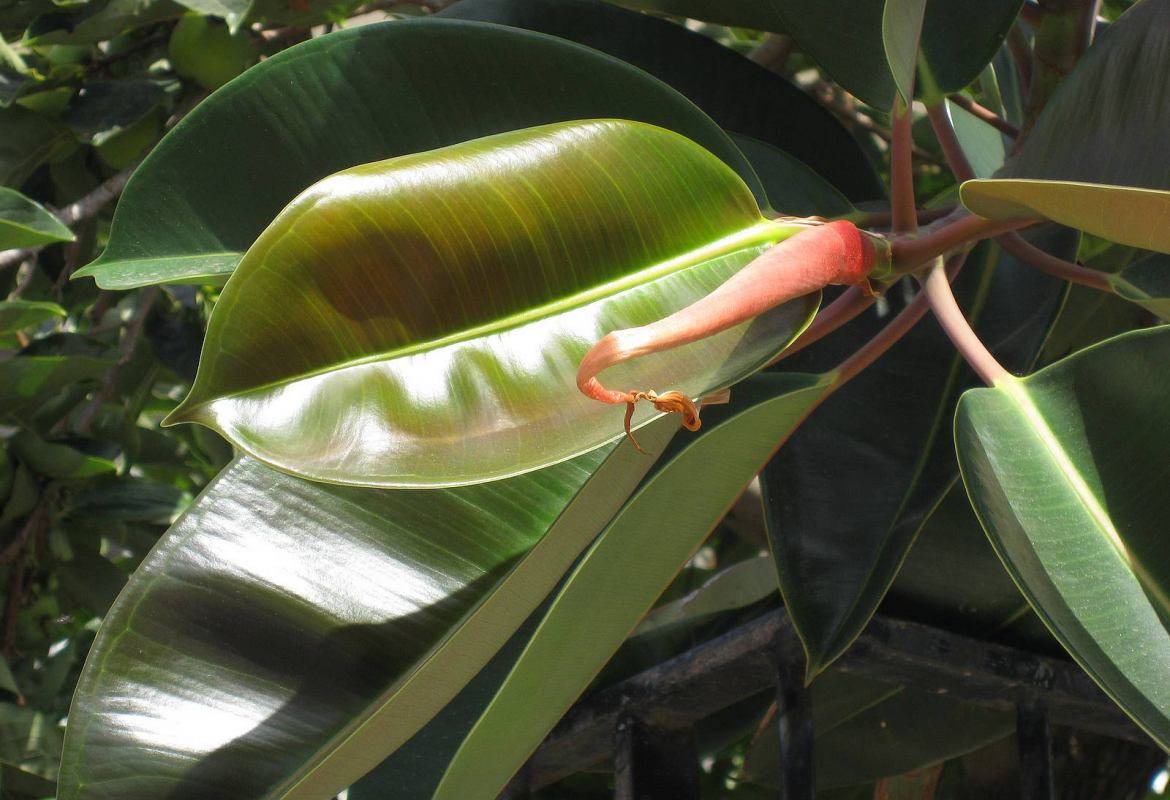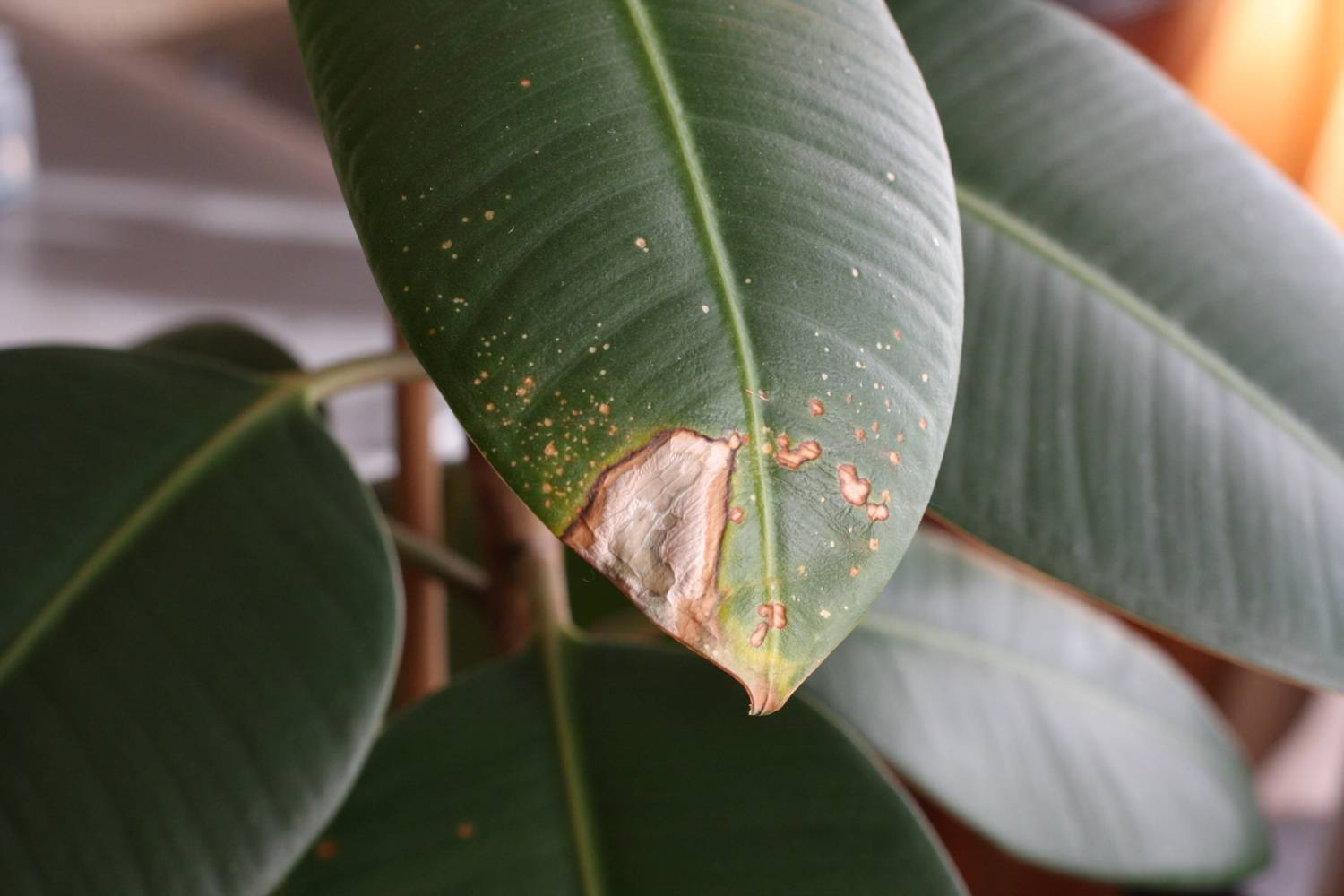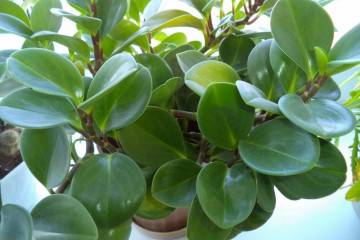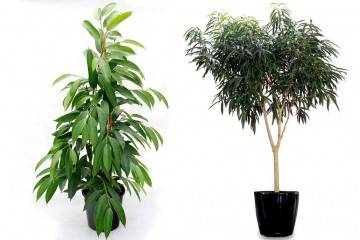Ficus Tineke - growing and caring for a flower
Content:
Indoor plants often play a key role in home decoration. These include the ficus Tineke. In addition, he has inherent healing properties, and according to signs he is a symbol of prosperity and tranquility in the house.
What does ficus Tineke look like?
Ficus Elastica Tineke belongs to the rubber plant family. For several years it reaches an impressive size. The native land of the flower is the north of India and Indonesia. The oval shape of the leaf is large, in favorable conditions it grows up to 30 cm. The coloring of the leaf surface is heterogeneous, against a saturated green background, a border of a yellowish or white hue is observed. Sometimes there are varieties that have white veins throughout the leaf.
Ficus elastica Tineke is only one of the representatives of Rubber plants. There are many others that are worthy of decorating a space in an apartment or office. Outstanding representatives are:
- Abidjan;
- Belize;
- Black Prince;
- Melanie;
- Robusta.
Features of caring for Tineke ficus
This variety of ficus, like other species, is not picky about care. Therefore, beginning flower growers can begin to understand the world of indoor plants with ficuses. Some difficulties that can be faced are the rapid growth of the crown and the painful reaction to bright light.
Temperature
The habitual climate for Tineke ficus is typical for warm eastern countries. Hence the conclusion - the plant does not tolerate cold. The temperature parameters must not be allowed to drop below 5 ° C. The result of the uncomfortable temperature will be the blackening of the leaves and trunk of the ficus, and subsequently its death.
This does not mean that the flower is suitable for high temperatures. If the air in the room is too dry, it is also detrimental to him. Therefore, on hot days, be sure to monitor the humidity level in the room.
Humidity
Humidity problems usually begin on hot summer days and during the heating season, especially if the pots are placed near a radiator. In order to avoid drying out of the leaf, it is necessary to carry out systematic spraying of the crown of the plant. In this case, the water must be boiled in advance.
Watering
Tineke rubber ficus loves constantly moist soil. In this he differs from his fellows. It is not recommended to allow the soil to dry out, but frequent overflows are detrimental to the plant. Roots react very painfully to dryness and excess moisture.
To prevent this from happening, it is necessary to properly water the ficus:
- in the summer three times a week;
- in autumn and winter - twice a week;
- in the spring, during the period of active growth, watering is carried out as needed.
Lighting
Proper lighting is an especially important factor in plant care. If there is not enough light, then the color of the leaves will suffer from this.They lose their variegation and eventually become pure green. And after a certain period, the flower can begin to shed its crown, it stops growing.
It is necessary to place the plant in the house in the immediate vicinity of the window. In summer, it can be rearranged to a balcony or outside.
Too bright light is also detrimental to the flower. Do not allow direct sunlight to fall on it, this will lead to burns. At noon, the ficus should be in the shade.
Top dressing
For the good development of the ficus Tineke, top dressing is periodically carried out. He constantly needs magnesium and nitrogen supplements. Fertilizer "Izumrud" is optimal for this houseplant. It successfully combines the necessary components.
Priming
The plant prefers a loose and fertile substrate. Therefore, sod and deciduous soil is additionally introduced into the universal soil from the store. For looseness, add a little river sand.
When and how it blooms
Ficus Tineke blooms quite rarely at home. Usually large plants throw out peduncles if they are properly looked after. The plant produces spherical inflorescences that look like berries.
Pruning
In ficus, the crown and root system grow rather quickly. Therefore, in a couple of years, a flower can turn into a tree. You can curb this process by reducing the volume of the pot and systematic pruning.
To shape the ficus bush, all new shoots are pinched at a level of 10-15 cm. This leads to the fact that lateral stems begin to form, which are subsequently also pinched. Shoots directed towards the inside of the plant may not be touched, but if the bush becomes too thick, some of them are cut out.
It is necessary to give the shape of a tree to those specimens in which the trunk is well developed. For this, the lateral stems are removed completely. There remain those that are located on the crown in an amount of 5 to 7 pieces. Pinch them after the plant reaches the desired height. Then, as the lateral shoots grow, the crown is formed.
Reproduction
It is better to propagate ficus in the spring. This process is carried out by cuttings. Lignified shoots are suitable. Their length should be from 10 to 15 cm. The cut is made at an angle with a well-sharpened tool.
To propagate a flower, you need to prepare the material. There should be 2-3 leaves on the processes. They are cut in half, and the rest is rolled up into a tube. This is done in order to reduce moisture loss. The bottom leaf is removed completely. The slice is wiped from the liquid and placed in water for a couple of hours.
Germination of cuttings is carried out in two ways:
- keep the cutting in a container with water until the roots appear. This usually takes from two weeks to a month. Install the container in a bright place, but without direct sunlight. The air temperature should be maintained at 25 ° C, and the humidity should be 80%. It is necessary to exclude contact of leaves with water in order to avoid their rotting;
- placing the cuttings in moist and loose soil. The cut is dried, treated with charcoal and placed in a pot at an angle. After that, a greenhouse effect is created by covering the container with a film or jar. Periodically moisten the soil and open it for ventilation. As soon as new leaves have appeared, the stalk is opened.
Possible growing problems and diseases
As with other indoor plants, problems may appear in the form of disease or pest damage, which it is advisable to eliminate immediately.
- The sheets began to wither and sag. This indicates a lack of moisture. The flower needs to be watered urgently.
- The yellowing and dropping of the lower leaves indicates the overflow of the ficus.
- Pale foliage, slow growth, deformation of new shoots. The plant needs a transplant or feeding.
- The leaves begin to fall off, and brown spots form on the rest. Low temperature for ficus. It is necessary to provide optimal conditions.
- Whitish and rough spots appear on the underside of the foliage. This indicates the appearance of a pest - a mealybug. You can remove it with a sponge dipped in methyl alcohol. Spraying with insecticides also helps.
- The appearance of yellow spots on the leaf plate, and a cobweb forms from the inside. A spider mite attacked the plant. To eliminate the pest, sprinkle with ficus derris, malathion or other insecticide, and also increase the level of humidity.
- The appearance on the stems of dense, bumpy brown spots - a lesion with a scutellum. It is necessary to wipe with a napkin dipped in methyl alcohol, or treat with an insecticide.
Proper care of the Tineke ficus at home will allow you to grow a specimen that will become a worthy decoration for any interior. The only problem may be the lack of space that will be needed for the ficus over time.

